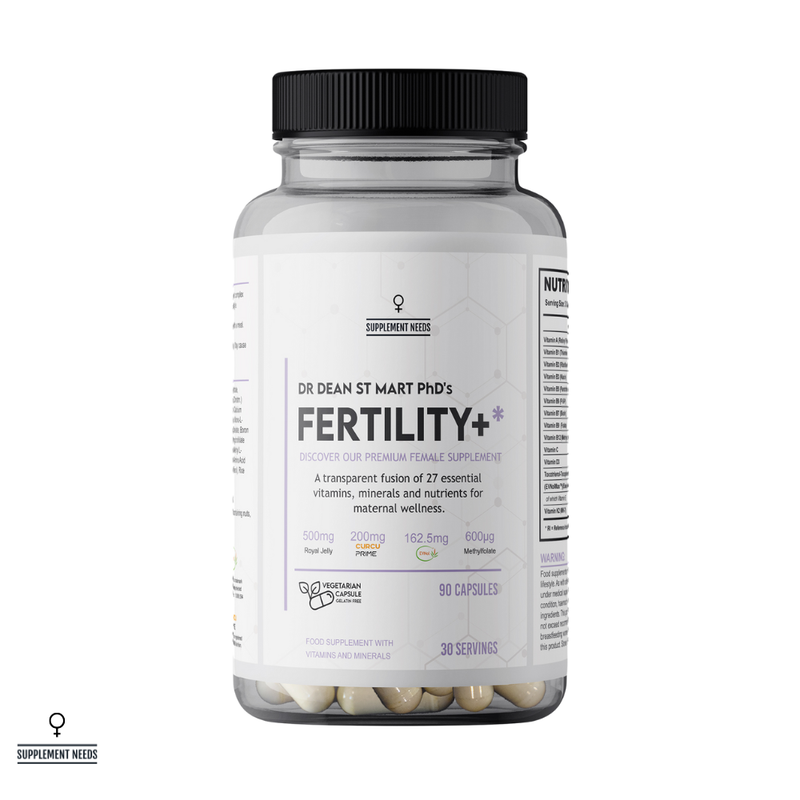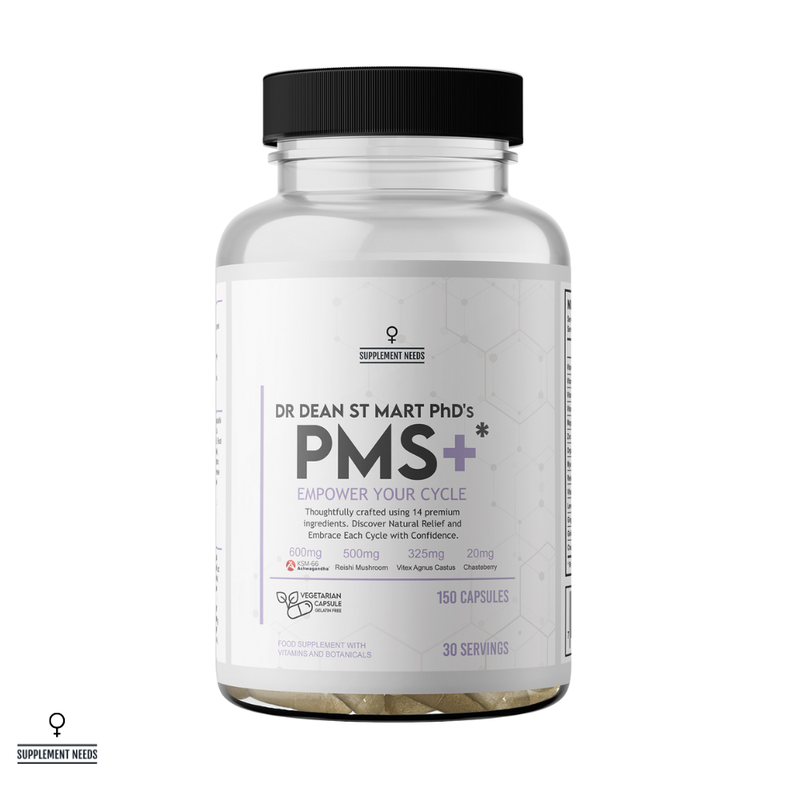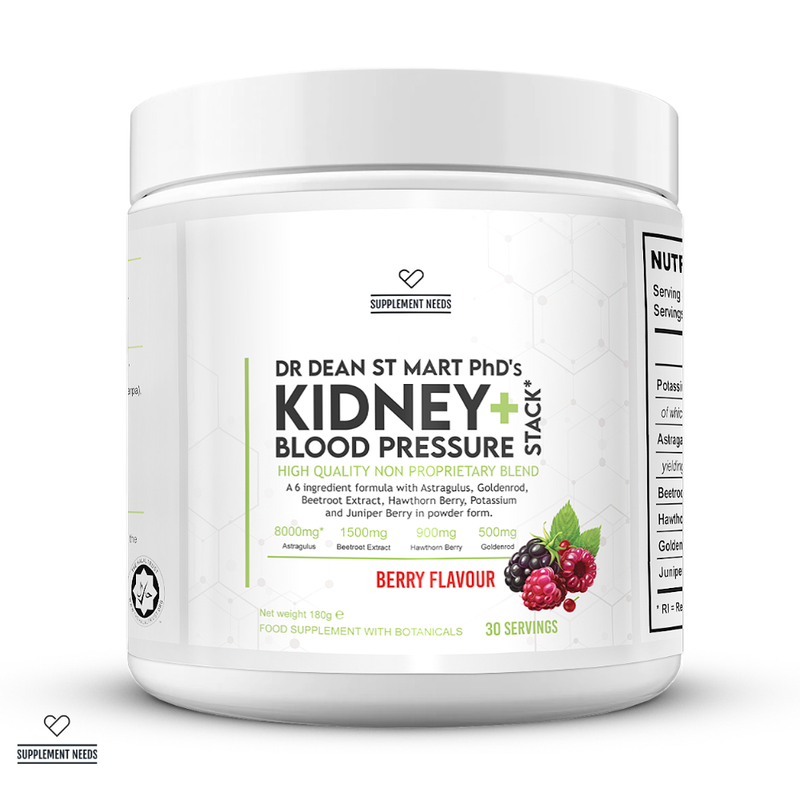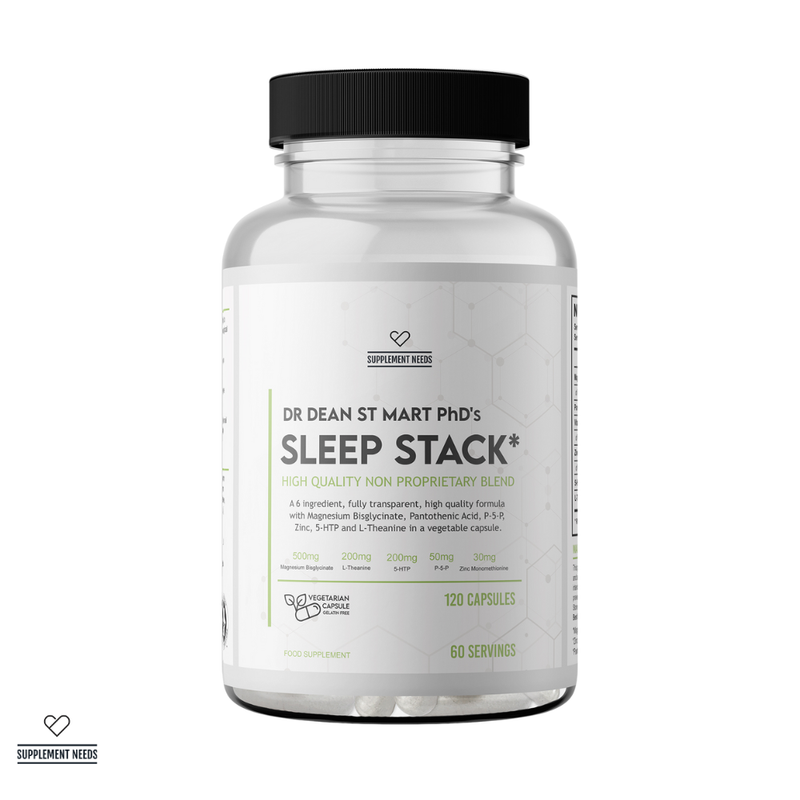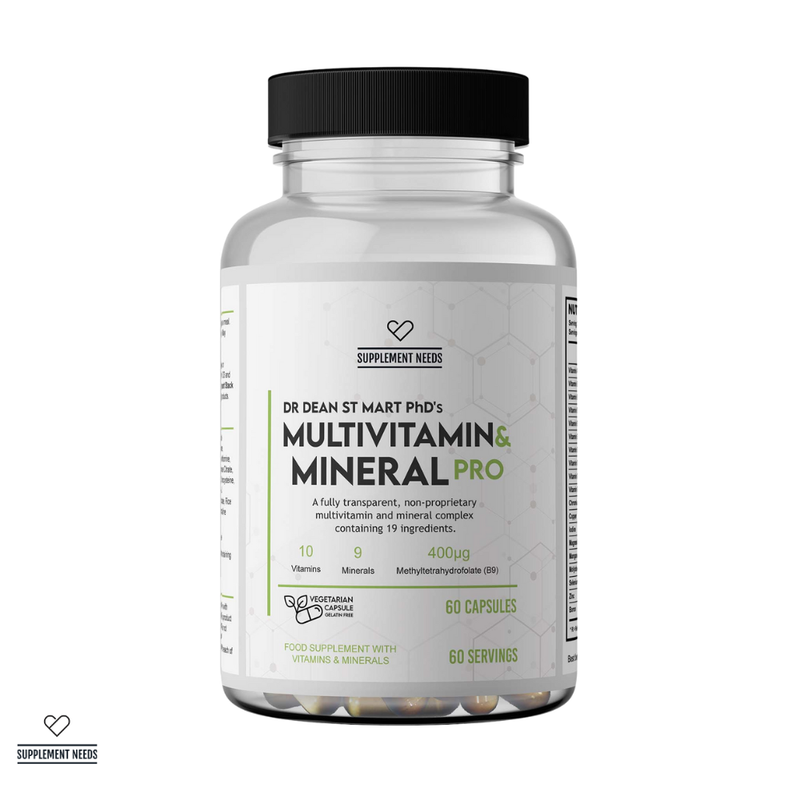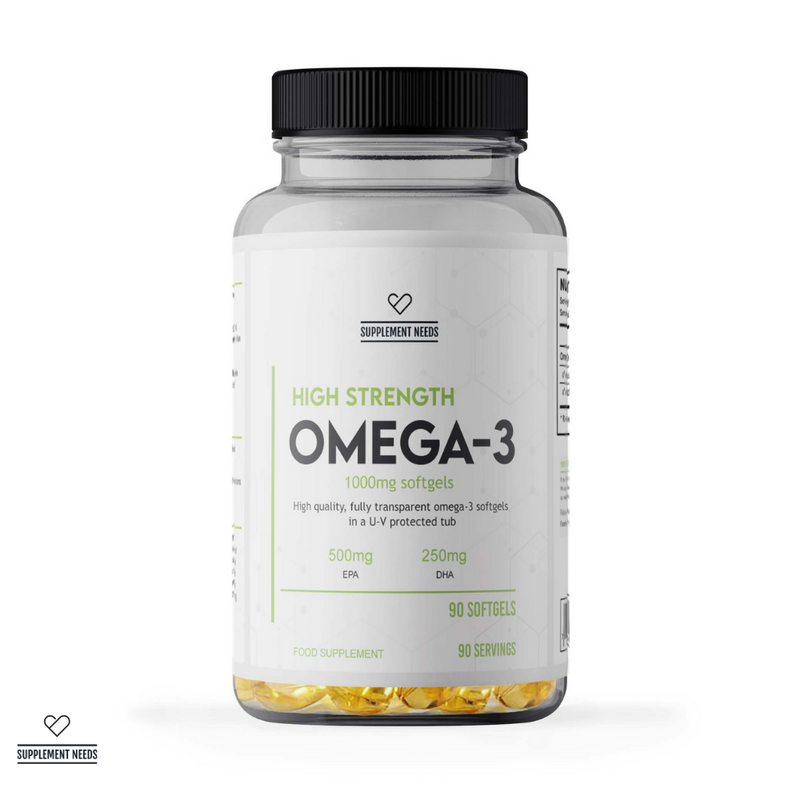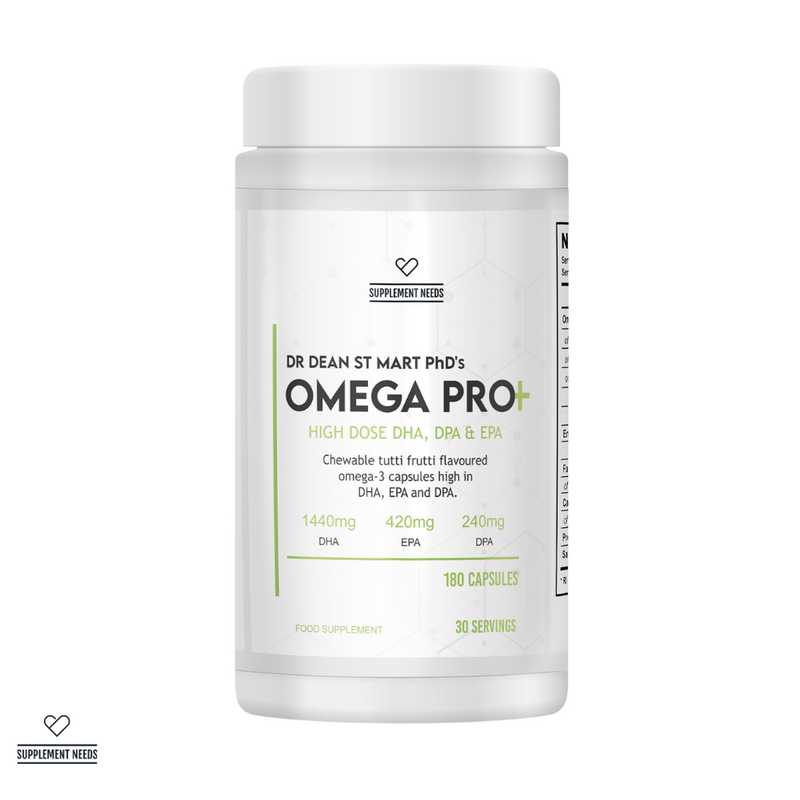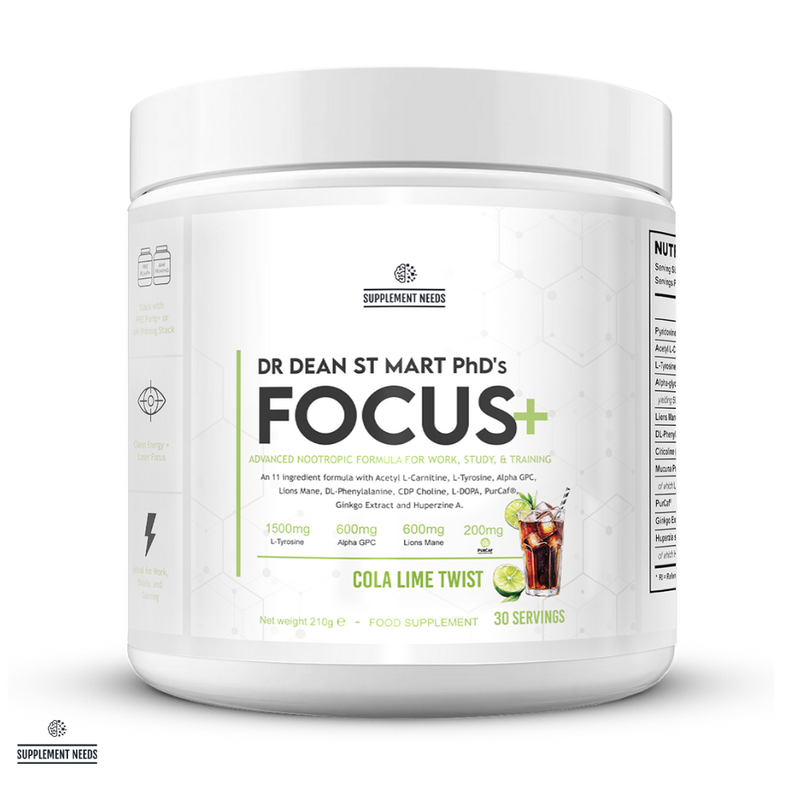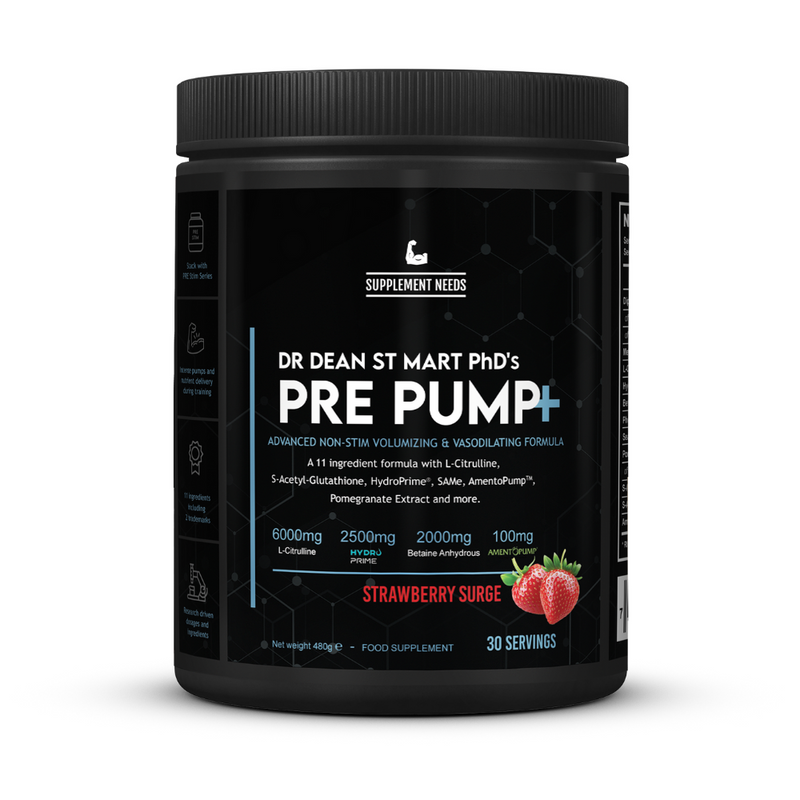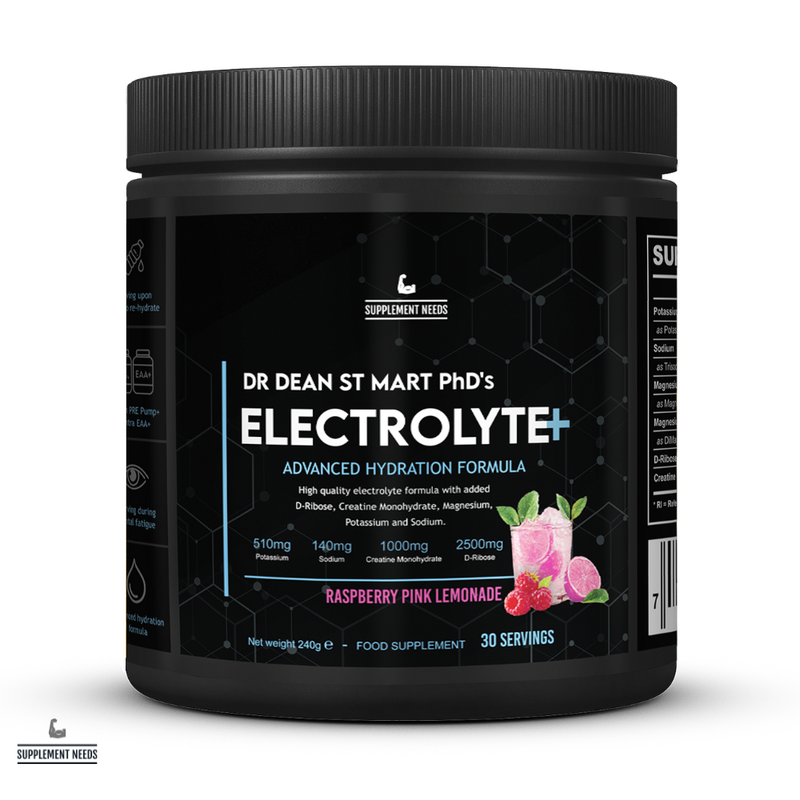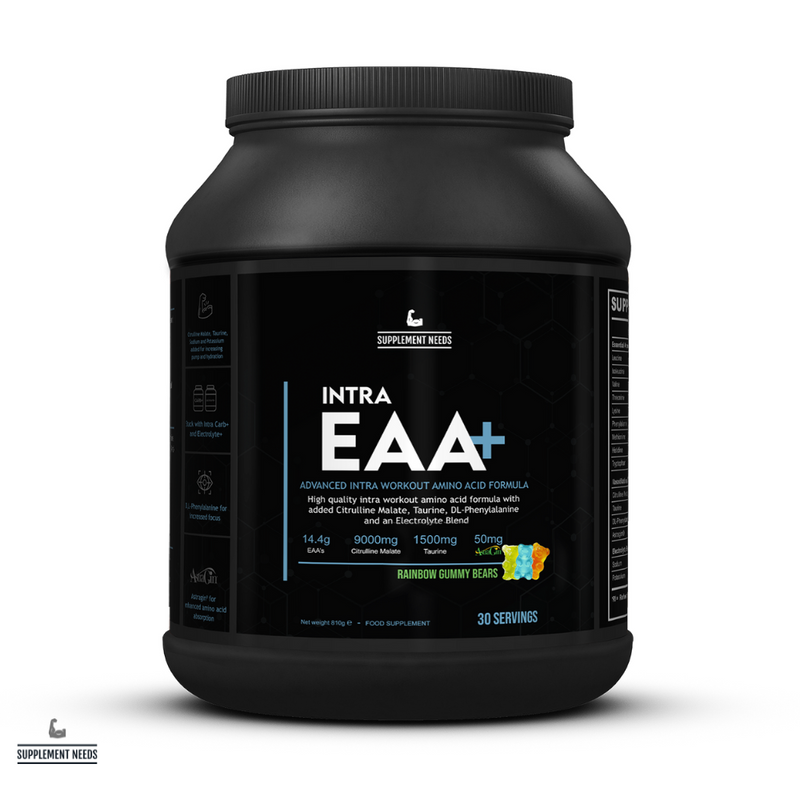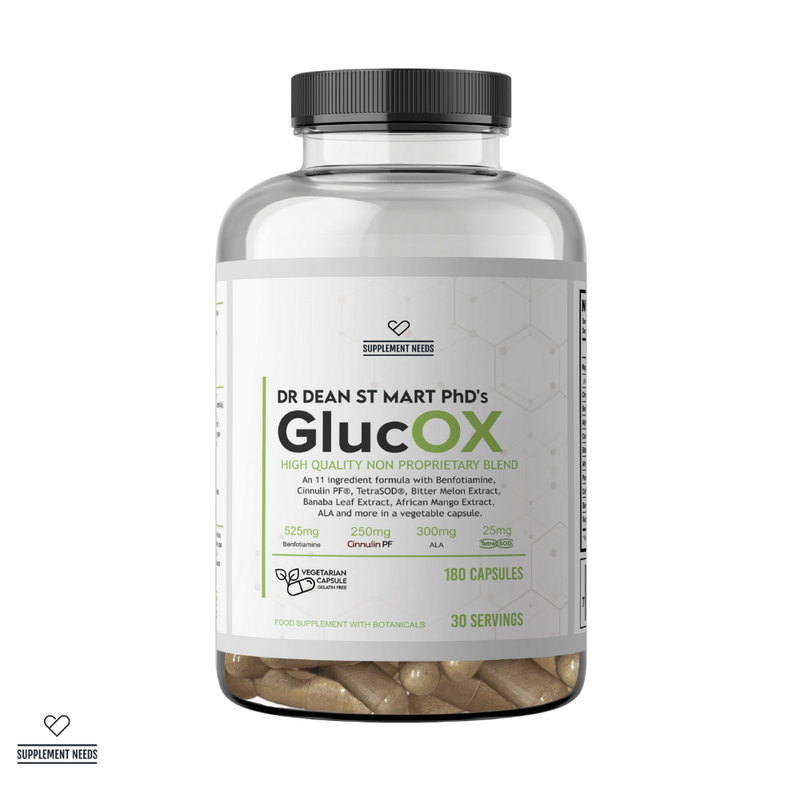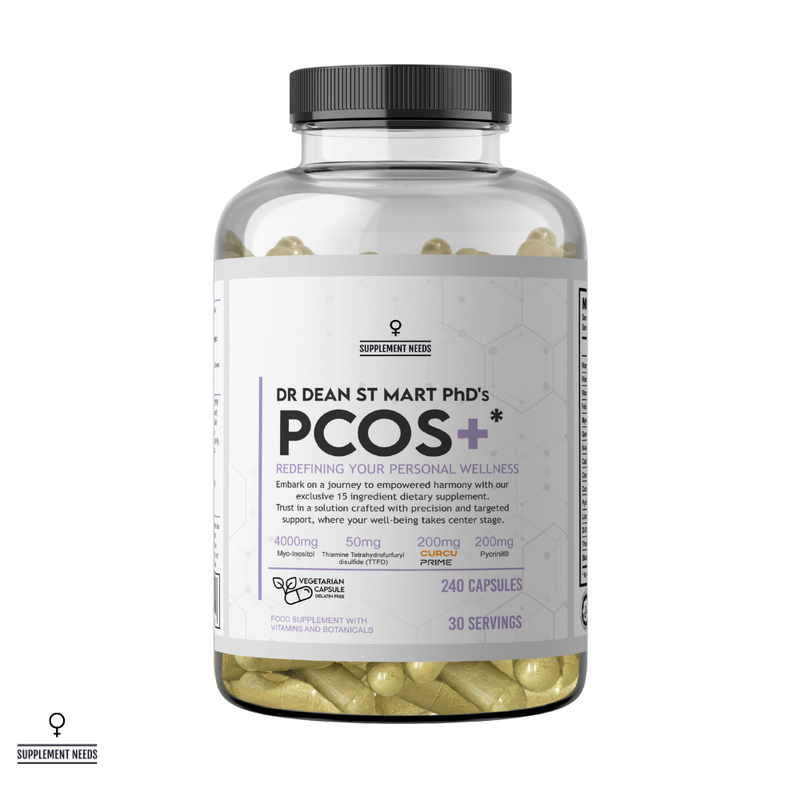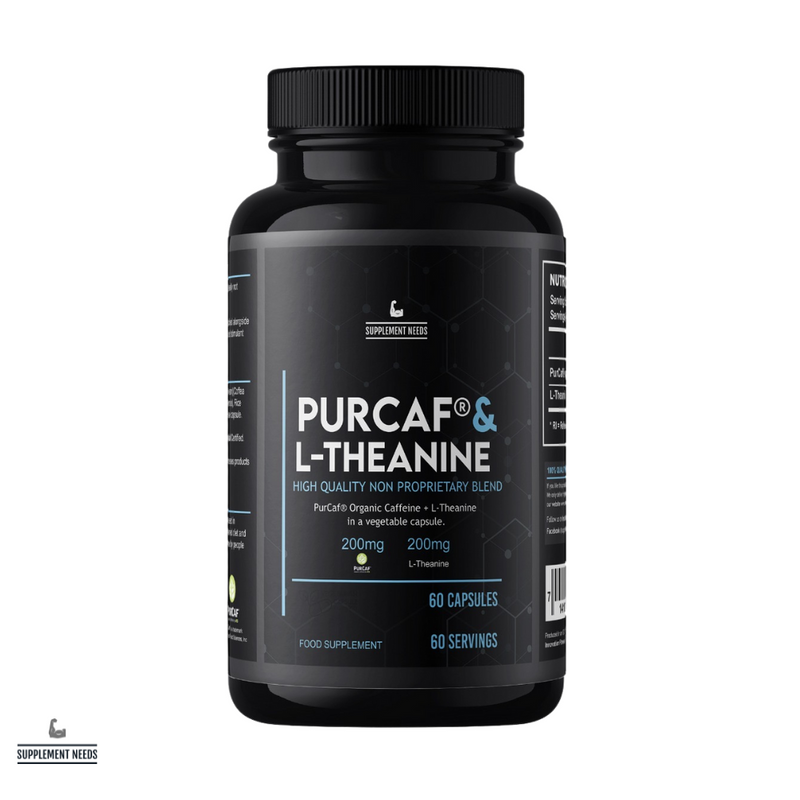Even if you’ve only a passing interest in nootropics - or supplementation more widely - you’ve probably encountered Lions Mane. It’s the ‘wonder mushroom’ that is being touted as the ultimate functional supplement. Is that really the case? Or has it fallen victim to media hype? Discover the truth with Supplement Needs in our latest guide…
What is Lions Mane?
With its wonderfully descriptive name, Lions Mane is a species of tooth fungus (a group of hydnoid fungi that produce their spores on the surface of pendant, tooth-like or spine-like projections).
Classified under the binomial name Hericium erinaceus1, Lions Mane has a number of colloquial names including Bearded Tooth Mushoom, or Monkey Head Mushroom (the latter of which finds common usage in Asia).
In an interesting aside, the mushroom’s Latin genus name Hericium translates as ‘hedgehog’.
As you’ll see from the photograph below, Lions Mane mushrooms have garnered their name thanks to their resemblance to the large, shaggy manes of male lions:

The Lions Mane mushroom has a broad natural range and can be typically found in the northern temperate forests of Asia, Europe, and North America. The Hericium erinaceus, is a saprotroph - an organism that obtains nutrition by decomposing dead organic matter.
It’s this saprotrophic role that Lions Mane undertakes that makes it so valuable for woodland ecosystems. Saprotophs like Lions Mane effectively act as a ‘woodland recycling service’, breaking down wood and in turn unlocking nutrients for other organisms (such as invertebrates) to consume2.
In short, Lions Mane mushrooms love dead trees, with their preferred feeding substrate being decaying beech, oak, maple, walnut, and sycamore trees.
If you want to see a Lions Mane mushroom ‘in the flesh’ then you stand the best chance of doing so in late summer to autumn, when the fungus fruits.
Note: we’d like to highlight a common misconception when it comes to fungi and mushrooms in general. They are not necessarily the same thing. Fungus refers to the underlying mycelia network (this is typically invisible as it is buried in the ground or enmeshed in a substrate (e.g. a dead tree)). Mushrooms are effectively the ‘fruit’ of the fungus, emerging during certain times of the year. In short, all mushrooms are part of fungi, but not all fungi make mushrooms.
Lions Mane and conservation
With its many purported benefits (as we’ll cover shortly), it’s perhaps tempting to venture out in your local woods and do a bit of amateur mycology yourself.
But, that wouldn’t be a good idea.
Why? Because, Lions Mane mushrooms are legally protected (at least, here in the UK).
They are covered by Schedule 8 of the Wildlife and Countryside Act 1981, and one of only four species of fungi to be afforded such protection3.
Lions Mane has been granted such as protection as it is especially rare in the wild. Depending on old, established woods, and being the focus of unscrupulous mushroom collectors, means the Lions Mane is under considerable pressure.
To put it bluntly, it is illegal to pick the Lions Mane mushroom. Doing so risks a £5,000 fine or six months of imprisonment4.
With Lions Mane becoming incredibly popular in recent years (see the increase in Internet searches below), supplement manufacturers have turned to commercially-cultivated sources instead.
At the time of writing, China is the largest global producer of Lions Mane, followed by the USA, Canada, and Germany.
This commercial cultivation has a number of benefits, being>sup>5:
-
Legal: with commercially-grown Lions Mane not subject to conversation legislation.
-
Sustainable: commercially-grown Lions Mane mushrooms relieve the pressure on wild mushrooms.
-
Consistent quality: commercially-cultivated Lions Mane mushrooms are grown in highly controlled, sterile environments, ensuring consistent quality.
-
Consistent potency: extracts from commercially-cultivated Lions Mane mushrooms can be standardised to produce consistent active compounds (such as the hericenones and erinacines that Lions Mane is so well known for).
Lions Mane mycochemistry and composition
So, why has Lions Mane become so popular? Why is it purportedly effective against a wide range of ailments including memory loss, depression, anxiety, dementia, cancer, and a whole host of neurological disorders?
It all comes down to Lions Mane’s composition and integral chemistry. Below, we’ve set out the key compounds of Lions Mane that have been linked to potential human health benefits.
Polysaccharides
Polysaccharides are long-chain sugars (aka complex carbohydrates) that are made up of long chains of monosaccharides, which are themselves linked together by glycosidic bonds6.
In the context of Lions Mane mushrooms, the polysaccharides are primarily composed of β-glucans (beta-glucans).Because these beta-glucans are not digested like regular carbohydrates - but instead interact with the body’s immune system and gut microbiota - they have excellent immune modulation properties.
Beta-glucans can bind to receptors on immune cells such as macrophages, neutrophils, dendritic cells, and natural killer (NK) cells - priming immune cells so that they are better able to respond to viruses, bacteria and other pathogens7.
Beta-glucans have also been linked to anti-cancer activity, cholesterol reduction, and gut health.
Diterpenoids
Diterpenoids (that are also known as diterpenes) are a class of organic compounds that are synthesised by plant and fungi and that act as the building block for many metabolites such as retinol, phytol etc8.
Of the dieterpenoids that are present in Lions Mane mushrooms, the two most studied are hericenones and erinacines.
Let’s explore each in turn.
Hericenones
Predominantly found in the mushroom itself (the fruiting body), hericenones are a group of aromatic compounds that can technically be considered to be benzaldehyde derivatives. They have a lipophiloc structure, based on benzaldehyde ring with fatty acid side chains. Thanks to this structure, hericenones can be fairly bioavailable.
Hericenones have been repeatedly linked to neurotophic activity: supporting the brain’s own growth signals including NGF (Nerve Growth Factor) and BDNF (Brain-Derived Neurotrophic Factor) rather than acting as a stimulant9.
Hericenones have also been reported to possess anti-inflammatory and antioxidant effects, as well as neurite outgrowth - a credible rationale for the subtle ‘clear-headed’ effect that users of Lions Mane have reported10.
Erinacines
Erinacines are found primarily in the mycelium of the Lions Mane (the mushroom’s root-like growth stage). Like hericenones, erinacines have been the subject of study for their neurotrophic activity - which have suggested that they can stimulate NGF release, modulate growth-pathway signalling and support neurite outgrowth1112.
Furthermore, a year-long study of individuals with mild Alzheimer’s disease (using an erinacine-enriched mycelial extract) reported cognitive benefits versus a placebo13.
Other secondary metabolites
Apart from polysaccharides and diterpenoids, Lions Mane produces a series of other secondary metabolites. These include:
-
Sterols.
-
Alkaloids.
-
Lactones.
-
Phenols.
-
Volatile compounds.
These secondary metabolites have a range of potential benefits, including making contributions to antioxidant, antimicrobial, and anti-inflammatory actions within the body.
In short, Lions Mane isn’t a one-compound wonder. It has a multi-layered pharmacological profile.
What are the potential benefits of Lions Mane?
As we’ve alluded to above, Lions Mane has a number of potential benefits - particularly around neural health and cognition. So, below, we’ve had a closer look at these benefits and the scientific evidence supporting them.
Acute focus and mental speed
When most people think about nooptropics, they think in terms of “will I actually feel it?”. For Lions Mane, this is a question that has been historically difficult to answer. However, a 2023 randomised, double-blind, placebo-controlled trial in health young adults provided evidence of an acute effect after a single dose14.
In this study, participants consumed 1.8 grams of Lions Mane fruiting body powder and were tested on the Stroop task - a gold standard cognitive test that measures selective attention, processing speed, and cognitive flexibility. Approximately 60 minutes after ingestion, the Lions Mane group (as opposed to the placebo group), showed significantly faster reaction times, without a cost to accuracy.
Cognitive support with ageing
Lions Mane is purportedly able to provide cognitive support with ageing. How? Well, let’s turn to a 2009 double-blind, placebo-controlled clinical trial, that involved 30 older adults diagnosed with mild cognitive impairment (MCI)15.
Participants were randomised to receive either four 250 mg tablets of Lions Mane fruiting body powder three times daily (total of 3g/day), or a placebo, for 16 weeks. So, what were the results?
-
The Lions Mane group showed significant improvements on the Cognitive Function Scale, with the biggest gains seen in orientation and memory tasks.
-
These improvements were time-dependent. In effect, the longer supplementation continued, the more scores improved.
-
When supplementation stopped after the trial, cognitive scores in the Lions Mane group declined back towards the baseline within four weeks.
Tip: the findings of this study suggest that A) Lions Mane may genuinely support brain function in populations undergoing cognitive stress, and B) Lions Mane is a ‘use it or lose it’ supplement. If you want to preserve the potential benefits, you need to keep taking it consistently.
Mood and stress
Lions Mane isn’t just about sharper focus - there’s also emerging evidence that it can take benefit your mood and general stress levels.
One of the most cited studies regarding Lions Mane and its effect upon mood and stress is a study from Japan conducted in 201016. It centred 30 middle-aged women with symptoms of stress, irritation, and mild depression who were enrolled in a four-week trial.
The participants were then randomised so that they were either consuming cookies containing Lions Mane mushroom powder or placebo cookies on a daily basis. At the end of the trial, the Lions Mane group reported significantly lower levels of anxiety and irritability compared to the placebo group (their reports were validated by psychological rating scales). Blood analysis of the Lions Mane group also found an increase in pro-BDNF (Brain Derived Neurotrophic Factor precursor) - suggesting a potential biochemical mechanism underpinning the observed mood effects.
Although an admittedly small study, it does add weight to the notion that Lions Mane may impact mood regulation in addition to cognition.
Nerve health
One emerging area of study regarding Lions Mane is in its potential role in nerve regeneration and protection.
Whilst human studies are limited, multiple animal and cell studies suggest that extracts of Hericium erinaceus may help damaged nerves regrow and protect neurons from toxic insults.
One particularly notable study of mice found that oral administration of Lions Mane promoted functional recovery after a crush injury to the peroneal nerve, with evidence of faster axon regeneration compared to controls17.
Still another study in rats found that erinacine A-enriched mycelium extracts enhanced NGF production and accelerated regeneration of injured peripheral nerves18.
Taken together, these studies (and other similar animal studies) suggest that Lions Mane may be able to accelerate peripheral nerve repair and buffer neurons against degenerative stressors.
When should you take Lions Mane?
As the scientific studies above indicate, Lions Mane may well be a beneficial supplement for you and your health goals. However, when it comes to the practical use of Lions Mane, we are often asked “when should you take Lions Mane?”.
Our answer can be summed up as: ‘if you’re playing the long-game - seeking improved cognition and mood - consistency beats clock-watching every time. In other words, time doesn’t matter so much as regularity.
However, there are a few other points to consider:
-
For acute focus: take Lions Mane approximately 60 minutes prior to your task or workout session19.
-
For long-term support: ensure you are taking Lions Mane every day20.
How long does Lions Mane take to work?
Another question that we regularly receive here at Supplement Needs (and one that is interlinked with the question above), is ‘how long does Lions Mane take to work?’
The short answer is that you may begin to feel the effects (e.g. focus, clarity and calmness) within 60 minutes of taking Lions Mane.
However, as the evidence that we highlighted earlier stated, if you wish to really benefit from the potential benefits of Lions Mane, you should be taking it consistently, every day. This longer term supplementation could be broken down in the following way:
-
Up to 4 weeks of supplementation: you may begin to see longer-term mood and stress shifts.
-
8 to 16 weeks of supplementation: you may begin to feel sustained cognitive changes (e.g. focus and clarity).
How much Lions Mane should you take per day?
Naturally, if someone like yourself is interested in adding Lions Mane to your diet, you’re going to want to know the optimal dose.
Whilst there is no definitive answer to this question, the most studied dosage is around 500mg per day.
Creating the ultimate Lions Mane supplement stack
We know that many people don’t restrict their supplementation to a single product alone. Instead, they prefer to ‘stack’ a combination of supplements in order to achieve specific health and/or productivity goals.
If that sounds like you, then you’ll potentially the supplements listed below, that will all complement Lions Mane.
Supplement Needs Alpha GPC

Lions Mane promotes neurotrophic factors like NGF and BDNF - the proteins that help neurons grow and repair. However, these proteins do need a neurotransmitter to fire effectively.
That’s where choline donors enter the picture. Supplements like Supplement Needs Alpha GPC boost acetylcholine - the key neurotransmitter for memory, focus, and motor control.
Supplement Needs PurCaf & L-Theanine

A small, clean dose of organic caffeine can perfectly complement Lions Mane. Supplement Needs PurCaf & L-Theanine influences neurotransmitter activity in real time: the caffeine blocking adenosine receptors to increase alertness, whilst the l-theanine modulates glutamate and GABA to reduce overstimulation.
When layered together (as in this supplement), these two compounds provide both short-term focus and long-term brain support.
Supplement Needs Sleep Stack

Since Lions Mane supports neuroplasticity, pairing it with a sleep-focused supplement like Supplement Needs Sleep Stack is perfect. Remember, good sleep is when synaptic consolidation - the process that Lions Mane supports - actually happens.
In short, whilst Lions Mane prepares the body for NGF and BDNF, it’s slow wave sleep (as supported by the Sleep Stack) that will consolidate and protect new neural connections.
Lions Mane and Sleep Stack: the perfect pairing!
Supplement Needs Focus+: the ultimate Lions Mane supplement

Supplement Needs Focus+ is a purpose-built, neuroscience-led, pre-focus formula that uses Lions Mane as its cornerstone ingredient to deliver calm, locked-in attention without the jittery crash of ordinary stimulants.
Lions mane brings a unique, multi-mechanistic profile - beta-glucan polysaccharides for immune and gut support, and key dipterpenoids that have been shown in research to encourage neurotrophic signalling (NGF/BDNF).
In practical terms, this means that Focus+ is designed to sharpen reaction time and mental clarity in the short term, whilst also supporting longer-term resilience when taken consistently.
Other ingredients within Focus+ include choline donors (e.g. Alpha-GPC), targeted amino acids (such as L-Tyrosine), and clean caffeine - that combine to provide the neurotransmitter and alertness support needed for immediate performance.
Take Focus+ about 60 minutes before a session for an acute uplift in processing speed and attentional control, and use daily if you’re aiming for cumulative cognitive and mood benefits.
Supplement Needs : the home of pre-workout and focus supplements
Formulated by renowned industry leader Dr. Dean St. Mart PhD, Supplement Needs pre-workout supplements have been designed to deliver ‘calm but locked-in’ focus.
Our pre-workout supplements line is built around neurosupport and performance synergy - not just caffeine hits. Across the range, every formula includes dosed ergogenics - with particular products containing important additions like Lions Mane, L-Tyrosine, Alpha-GPC, and Huperzine-A to enhance focus, coordination, and muscle-mind connection rather than jittery energy.
Shop pre-workout supplements now
For more insights and information about supplements, discover the Supplement Needs blog…
What Is Biohacking? How Does It Work? | Busting the Biggest Supplement Myths | Alpha GPC: Decoding the Hype (And the Science)
Disclaimer:
The information contained on this website should not be used as a substitute for professional medical care or advice. If you have questions about your health, please contact your doctor.
References
1. Wikipedia. Hericium erinaceus [online]. Available at: https://en.wikipedia.org/wiki/Hericium_erinaceus (Accessed on 22nd July 2025).
2. Woodland Trust. Bearded Tooth Fungus (Hericium erinaceus) [online]. Available at: https://www.woodlandtrust.org.uk/trees-woods-and-wildlife/fungi-and-lichens/bearded-tooth/ (Accessed on 22nd July 2025).
3. Woodland Trust. Bearded Tooth Fungus (Hericium erinaceus) [online]. Available at: https://www.woodlandtrust.org.uk/trees-woods-and-wildlife/fungi-and-lichens/bearded-tooth/ (Accessed on 22nd July 2025).
4. BBC News. Rare fungus found at Canterbury nature reserve [online]. Available at: https://www.bbc.co.uk/news/articles/cwy5k0ze9z1o# (Accessed on 22nd July 2025).
5. Plant Based News. What Are the Benefits Of Lion’s Mane Mushrooms And Where Can You Buy Them? [online]. Available at: https://plantbasednews.org/lifestyle/health/the-benefits-of-lions-mane-mushrooms/ (Accessed on 22nd July 2025).
6. Mohammed A, Naveed M, Jost N. Polysacchrides; Classification, Chemical Properties, and Future Perspective Applications in Fields of Pharmacology and Biological Medicine (A Review of Current Applications and Upcoming Potentialities) [online]. Available at: https://pmc.ncbi.nlm.nih.gov/articles/PMC7838237/ (Accessed on 22nd July 2025).
7. Venturella G, Ferraro V, Cirlincione F, et. al. Medicinal Mushrooms: Bioactive Compounds, Use, and Clinical Trials [online]. Available at: https://www.mdpi.com/1422-0067/22/2/634? (Accessed on 22nd July 2025).
8. Thurston D, Pysz I. Chemoprotective Agents [online]. Available at: https://taylorandfrancis.com/knowledge/Medicine_and_healthcare/Pharmaceutical_medicine/Diterpenes/ (Accessed on 22nd July 2025).
9. Meyer M, Wetmore I, Olson L, Thoenen H. Enhanced synthesis of brain-derived neurotrophic factor in the lesioned peripheral nerve: different mechanisms are responsible for the regulation of BDNF and NGF mRNA [online]. Available at: https://pubmed.ncbi.nlm.nih.gov/1527172/ (Accessed on 3rd October 2025).
10. Mori K, Obara Y, Hirota M, et. al. Nerve Growth Factor-Inducing Activity of Hericium erinaceus in 1321N1 Human Astrocytoma Cells [online]. Available at: https://www.jstage.jst.go.jp/article/bpb/31/9/31_9_1727/_article (Accessed on 3rd October 2025).
11. Zhang C, Cao C, Kubo M, et. al. Chemical Constituents from Hericium erinaceus Promote Neuronal Survival and Potentiate Neurite Outgrowth via the TrkA/Erk1/2 Pathway [online]. Available at: https://pmc.ncbi.nlm.nih.gov/articles/PMC5578049/ (Accessed on 3rd October 2025).
12. Ma B, Shen J, Yu H, et. al. Hericenones and erinacines: stimulators of nerve growth factor (NGF) biosynthesis in Hericium erinaceus [online]. Available at: https://www.tandfonline.com/doi/full/10.1080/21501201003735556 (Accessed on 3rd October 2025).
13. Li I, Chang H, Lin C, et. al. Prevention of Early Alzheimer’s Disease by Erinacine A-Enriched Hericium erinaceus Mycelia Pilot Double-Blind Placebo-Controlled Study [online]. Available at: https://www.frontiersin.org/journals/aging-neuroscience/articles/10.3389/fnagi.2020.00155/full (Accessed on 3rd October 2025).
14. Docherty S, Doughty F, Smith E. The Acute and Chronic Effects of Lion’s Mane Mushroom Supplementation on Cognitive Function, Stress and Mood in Young Adults: A Double-Blind, Parallel Groups, Pilot Study [online]. Available at: https://pmc.ncbi.nlm.nih.gov/articles/PMC10675414/ (Accessed on 3rd October 2025).
15. Mori K, Inatomi S, Ouchi K, Azumi Y, Tuchida T. Improving effects of the mushroom Yamabushitake (Hericium erinaceus) on mild cognitive impairment: a double-blind, placebo-controlled clinical trial [online]. Available at: https://pubmed.ncbi.nlm.nih.gov/18844328/ (Accessed on 3rd October 2025).
16. Nagano M, Shimizu K, Kondo R, et. al. Reduction of depression and anxiety by 4 weeks Hericium erinaceus intake [online]. Available at: https://www.jstage.jst.go.jp/article/biomedres/31/4/31_4_231/_article (Accessed on 3rd October 2025).
17. Kolotushkina E, Moldavan M, Voronin K, Skibo G. The influence of Hericium erinaceus extract on myelination process in vitro [online]. Available at: https://pubmed.ncbi.nlm.nih.gov/12675022/ (Accessed on 3rd October 2025).
18. Mori K, Obara Y, Moriya T, Inatomi S, Nakahata N. Effects of Hericium erinaceus on amyloid β(25-35) peptide-induced learning and memory deficits in mice [online]. Available at: https://pubmed.ncbi.nlm.nih.gov/21383512/ (Accessed on 3rd October 2025).
19. Docherty S, Doughty F, Smith E. The Acute and Chronic Effects of Lion’s Mane Mushroom Supplementation on Cognitive Function, Stress and Mood in Young Adults: A Double-Blind, Parallel Groups, Pilot Study [online]. Available at: https://pmc.ncbi.nlm.nih.gov/articles/PMC10675414/ (Accessed on 3rd October 2025).
20. agano M, Shimizu K, Kondo R, et. al. Reduction of depression and anxiety by 4 weeks Hericium erinaceus intake [online]. Available at: https://www.jstage.jst.go.jp/article/biomedres/31/4/31_4_231/_article (Accessed on 3rd October 2025).

